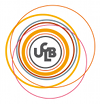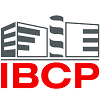PRIMATISS is a technical platform and a support hub for users wishing to carry out histology and microscopy experiments:
- It provides training to enable users to operate the platform’s equipment independently.
- It offers validated protocols and provides training in histology and immunodetection techniques (such as IF, IHC, Hematoxylin-Eosin staining, Masson’s Trichrome, etc.).
- It supports and advises users throughout their various research projects.
- It serves as a liaison with the LyMIC platforms for more advanced analyses (including high and super-resolution imaging, large-scale analysis, TEM, etc.).
Elise Lambert (MCU UCBL1)
Tél : +33 (0)4 72 72 26 77
E-mail : elise.lambert@univ-lyon1.fr
Sandra FERRARO (AI CNRS)
Tél : +33 (0)4 72 72 26 05
E-mail : sandra.ferraro@cnrs.fr
Histology is the study of the microscopic structure of tissues from living organisms and the cells that compose them.
Immunodetection, on the other hand, is a method based on the specific recognition of antigens by antibodies.
The unit’s platform allows for the preparation of tissue samples or samples derived from tissue engineering, either through paraffin embedding (dehydration using the HISTOS5 system and embedding via an embedding station) or cryopreservation. It is equipped with all the necessary tools for sectioning paraffin-embedded or frozen samples, including a manual microtome, an automated microtome, and two cryostats.
These sections can then be used for various types of labeling (e.g., histological stains, immunohistochemistry, immunofluorescence, etc.).
In addition, an inverted epifluorescence microscope (NIKON Eclipse TiE) is available to platform users for all optical microscopy observations and acquisitions, whether in transmitted light or fluorescence.
The platform also supports data analysis, thanks to software tools such as ImageJ and QuPath.
Technical support is available on-site to advise and train users on the different pieces of equipment, in compliance with Health and Safety regulations. The platform also serves as a link between users and the various LyMIC platforms (PLATIM, CIQLE, and CTµ).
This expertise enables histological, immunohistochemical, and ultrastructural analysis of samples produced through tissue engineering (e.g., following the induction of pharmacological agents or nanoparticles in biological systems).



